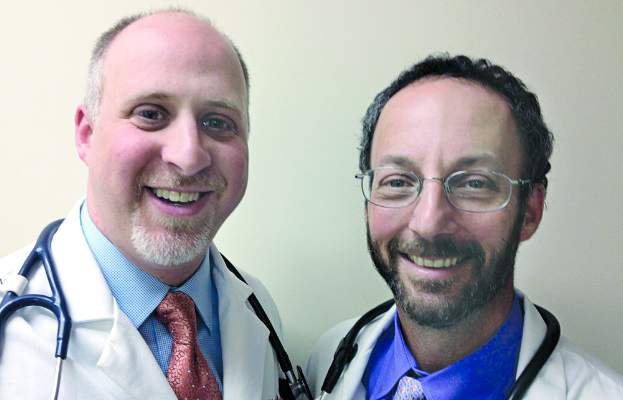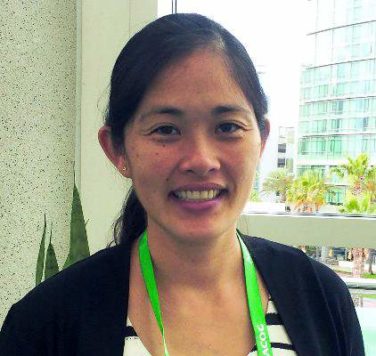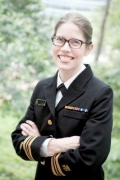“Once you stop learning, you start dying.” – Albert Einstein
Earlier this year, the Pew Research Center published the results of a survey of 2,752 adults living the United States.1 The intent of the study was to determine the prevalence of lifelong learning and better understand the motivations for doing it. The results were fascinating – 73% of those surveyed considered themselves lifelong learners. Admittedly, demographics did flavor the results, with education level, household income, and ethnicity playing a role among other variables. Also, the method of learning varied, from personal study to formal coursework and everything in between. But overall, it was clear that most people surveyed felt it was critical to continuously pursue education in one form or another.
Since the dawn of medicine, physicians have been trained to be lifelong learners. The word we use to describe what we do – practice – alludes to this very idea. But in the overwhelming morass of our day-to-day responsibilities, it seems impossible to keep up. It is critical that we develop sustainable habits for pursuing ongoing education, and equally important that we discover resources that facilitate the process. Currently, there are several key areas that physicians employ to stay current, and we’ll review a few of them here to discuss their advantages and disadvantages.
Personal study
The days of going to a public, professional, or even personal library for information are long past. Books simply can’t remain current enough to match the pace of knowledge advancement, especially in the field of medicine. Journals don’t share this disadvantage, but they can be hard to reference and, frankly, take up a lot of physical space. (I remember a stack of JAMAs becoming the foundation of a homemade coffee table back in medical school!) Thankfully, it is unusual for print publications to exist without a companion electronic version as well. Increasingly, physicians are moving to online sources because they are easily searchable and current, while not creating clutter in their homes or offices. Here again, choosing wisely is essential.
Every specialty has key publications that are held in high esteem. There are also those venerated journals that cross specialty and are always considered cutting edge and credible (for example, the New England Journal, JAMA, or Nature, etc.). In our experience, however, even limiting your reading to these core periodicals can be overwhelming. As such, physicians may consider resources that condense the information into manageable summaries that can be consumed efficiently. Many print publications successfully accomplish this (the one you’re reading is a great example), and have become an indispensable resource for providers looking to stay informed. Emerging digital tools are taking this idea even further to maximize usefulness. One such example, MD Edge , presents specialty-specific curated summaries that focus on the most-important articles that come out every week. This can even be delivered right to your inbox to make staying current an effortless process.
Point-of-care resources
We have long held that the best information is that which is available where and when you need it. Most electronic health records have embraced this idea, but in many cases the execution has been inconsistent. We are beginning to see clinical decision support systems that prompt users with “just-in-time” learning opportunities, but typically, the pursuit of information is still a “pull” and not a “push” – that is, the clinician still needs to elect to pursue the needed information. Educational resources may come in the form of peer-reviewed online references, such as Clinical Key or UpToDate , or as proprietary evidence-based protocols customized for a specific health care institution. These are easy to access and very handy, but they do not always encourage in-depth learning, as they are typically accessed during patient interactions to quickly find answers to clinical questions. On the the plus side, some online reference providers offer CME credits for accessing their services.
Live CME
It’s not surprising that many physicians cite in-person CME as their preferred method of medical education. Live courses hold several significant advantages. First, they are usually current and very easily satisfy requisite credit requirements. Also, they allow for interaction with experts and fellow learners to hone understanding and clarify questions. Finally – and perhaps most importantly – live courses force participants to set aside time to engage in professional growth.
There are many providers of high-quality, unbiased CME courses. Professional organizations such as the American College of Physicians, American Academy of Family Physicians, and state and local medical societies are a great resources for this. We should point out, however, that not all courses are created equal. Many companies have embraced the idea of destination CME as a way of selling “educational vacations.” These can offer great opportunities to learn while enjoying fantastic getaways. Unfortunately, while the weather may be great, the content may be spotty. Given the cost and time commitment involved in many of live CME courses, we would encourage physicians to choose trusted providers or seek input from colleagues.
Final thoughts
The amount of data we are asked to assimilate as physicians is astounding. The reasons to be educated are endless, and demands seem to come from everywhere. Patients expect us to know all of the latest information about disease and wellness; government and private insurers continuously invent new and complex pay-for-performance programs; and health information technology seems to change so rapidly that colleges and universities are devoting entire majors to its study. Frankly, there is no easy way to stay current on all we need to know all the time, but we aren’t alone in this struggle. More and more individuals are pursuing lifelong learning as a way to maintain a “youthful” competitive edge in every industry. As doctors taking responsibility for the care of our patients, the stakes are just a bit higher for us. But even as we in medicine embrace this reality and commit to lifelong learning, we must choose wisely how we invest our academic energies.
1. Pew Research Center, March 22, 2016, “ Lifelong Learning and Technology ”
Dr. Notte is a family physician and clinical informaticist for Abington (Pa.) Memorial Hospital. He is a partner in EHR Practice Consultants, a firm that aids physicians in adopting electronic health records. Dr. Skolnik is associate director of the family medicine residency program at Abington Memorial Hospital and professor of family and community medicine at Temple University in Philadelphia. Write them at fpnews@frontlinemedcom.com .





